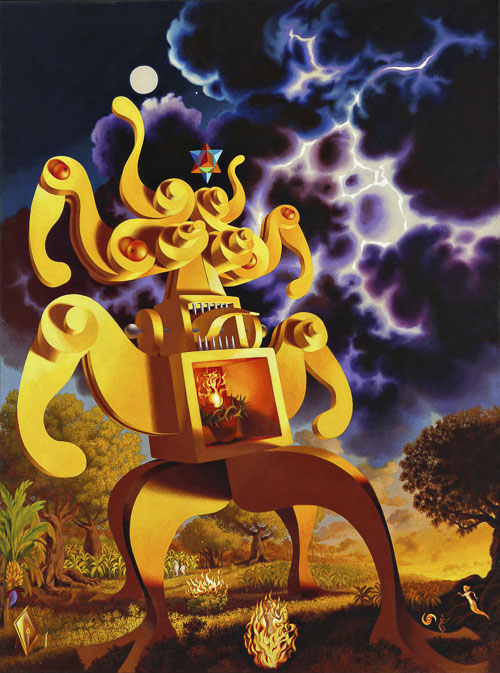 Jugando con Candela, 2016 — oil on canvas, 40 x 30 in.
Jugando con Candela, 2016 — oil on canvas, 40 x 30 in.
x.
A few short months ago, Rikki Ducornet introduced me to the paintings of the Cuban-born artist Ramón Alejandro. Awe and delight. Then she introduced me to the man, and we’ve been corresponding ever since. Awe and delight squared. Ramón Alejandro is an inspiration and an avatar. When he lived in Paris, he was written about but no less than Roland Barthes, who admired his robotic giants and specifically referred to his aimiability — “son amabilité (ce qui fait qu’on l’aime)”. He’s genuine, wise, prolific and warm. The paintings are gorgeous, outsized, sun-drenched. He makes me think of the line from Don Quixote: “There might giants.” And the giantish “sons of God” in the Old Testament. A world under the sign of the imagination, more alive than life itself.
But to give you the flavour of the man, here is a bit from an email he wrote to me before Christmas. We were talking about the roots of his art, his cheerful and migratory life (he lives in Miami now). This is how all artists should be.
It helped me to be radical in my choice that one of my father’s usual phrases was that when one was no good for anything one could always become an artist. He was also born into a family that raised cattle for milk and cheese and apple trees for cider in Asturias in northern Spain. The mountains did not permit planting many crops in such a hilly landscape and the pieces of land were too small for those who had a whole lot of children to feed. Most young people had to go to America to make a living. He was a real disciple of Diogenes the Great without knowing anything about the Cynic school of philosophers or any other philosophy, but he had managed to make one for himself out of his life experience. I chose the wisdom of Aristippus of Cyrene also before knowing anything about his existence. Generally, all the arts, and pleasure itself by the way, are a real scandal for most of those who were brought up outside city limits. I was kind of lucky that my grandfather on my mother’s side was a marvelous copyist of ancient paintings in the Prado Museum in Madrid. He failed to be a good painter himself, but art and literature was all that counted for him in life. He was my inspiration though — or maybe just because — he was never able to earn his life decently, and when he and his wife became old, by the time I knew him the short time of my first 13 years, had to be materially taken care of by the husbands of his two daughters. I love all mythologies, religions, musics, paintings, poetries and philosophies but do not believe in any of them. I think that deep inside I don’t even believe in Reality or in the different ways of conceiving it. All of them have been my movies and TV since I was a child. And lately I have had the feeling I will be including more and more divinities in my paintings.
The paintings we’re featuring on NC this month are brand new, and they are part of a show of Ramón’s work currently up at the Latin Art Core gallery in Miami.
dg
x
x
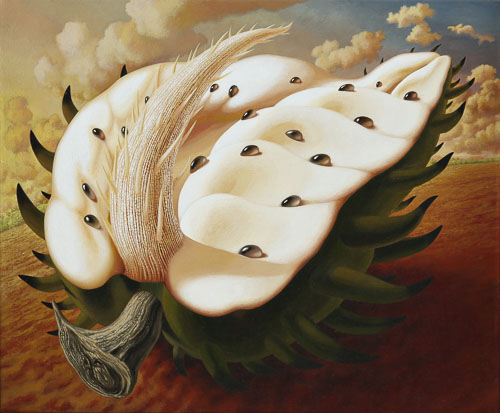 La Guanabana, 2003 — oil on canvas, 20 x 24 in.
La Guanabana, 2003 — oil on canvas, 20 x 24 in.
xx
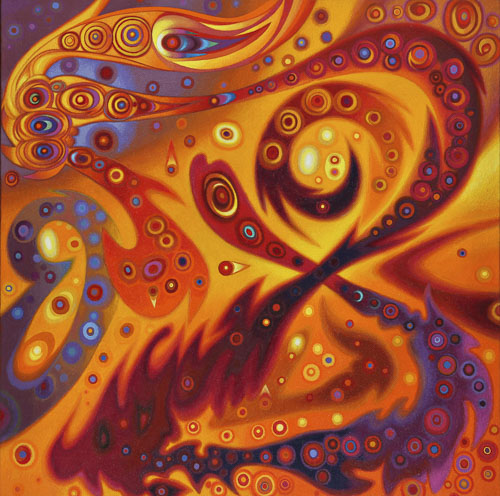 Aprendiz de Brujo, 2015 — oil on canvas, 24 x 24 in.
Aprendiz de Brujo, 2015 — oil on canvas, 24 x 24 in.
xx
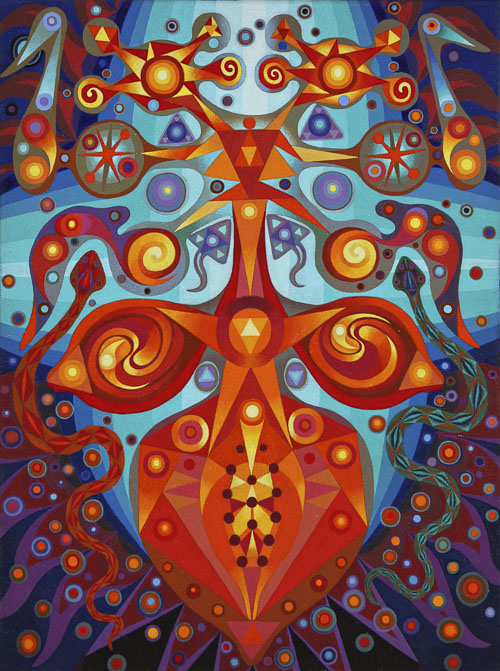 Virgen de Medianoche, 2015 —— oil on canvas, 24 x 18 in.
Virgen de Medianoche, 2015 —— oil on canvas, 24 x 18 in.
xx
 Demonio del Mediodia, 2015 — oil on canvas, 24 x 18 in.
Demonio del Mediodia, 2015 — oil on canvas, 24 x 18 in.
xx
 Detras de la Cruz esta el demonio, 2016 — oil on canvas, 40 x 30 in.
Detras de la Cruz esta el demonio, 2016 — oil on canvas, 40 x 30 in.
x
x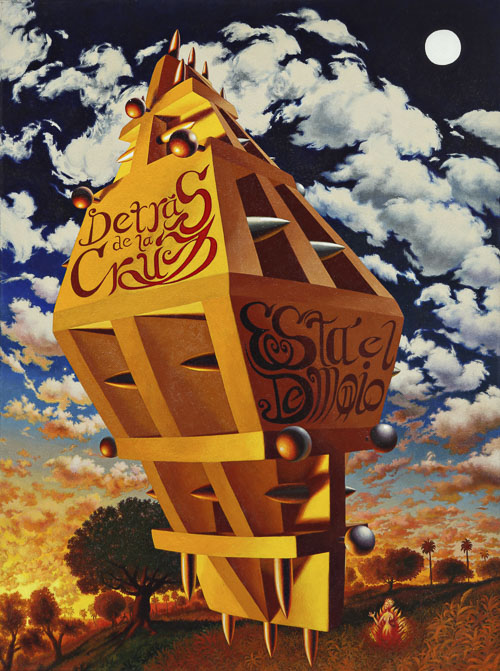 El universo esta iluminado por las llamas del Infierno, 2016 — oil on canvas, 40 x 30 in.
El universo esta iluminado por las llamas del Infierno, 2016 — oil on canvas, 40 x 30 in.
xxxx
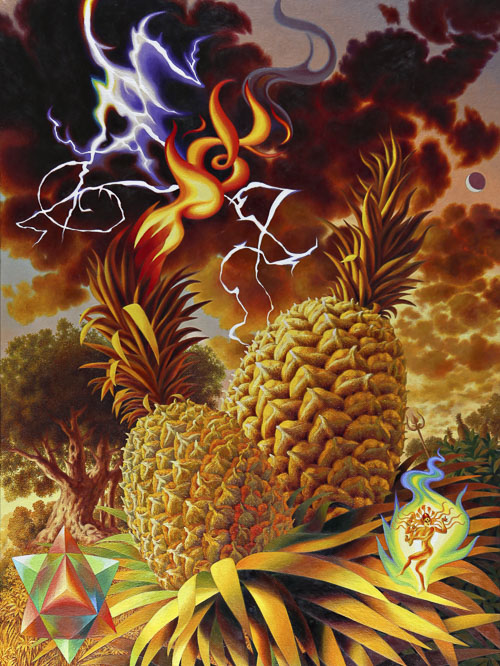 Combustion Espontanea, 2016 — oil on canvas, 40 x 30 in.
Combustion Espontanea, 2016 — oil on canvas, 40 x 30 in.
xx
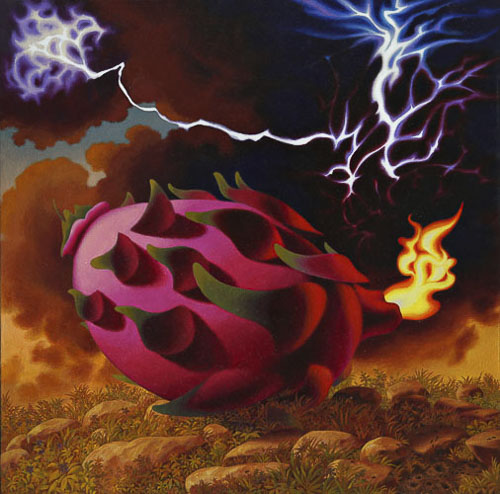 Energy flows in both opposite directions, 2016 — oil on canvas. 24 x 24 in.
Energy flows in both opposite directions, 2016 — oil on canvas. 24 x 24 in.
——Ramón Alejandro
 Current show at Latin Art Core gallery, Miami.
Current show at Latin Art Core gallery, Miami.
x
José Ramón Alejandro is a Cuban painter and writer. Since the late 1960s, his work has appeared in one-man shows in private galleries in Paris, Geneva, and Miami, as part of exhibitions in Israel and cities across Europe, and in exhibits of limited edition books illustrated by artists of note. The Bibliothèque Nationale de France, the Bibliothèque Municipale d’Angers in France, the San Diego Art Museum, and the Miami-Dade Public Library all include his works in their permanent collections.
x
Alejandro left Havana in the 1960s to live in Buenos Aires, Montevideo, and Paris, where he stayed for thirty years. In 1995, he moved to Miami. There he founded Editions Deleatur, a publisher focusing on Cuban writers within Cuba and abroad. Alejandro and his work are the subject of the essay collection Ramón Alejandro (L’Atelier des Brisants, 2006).
x
x
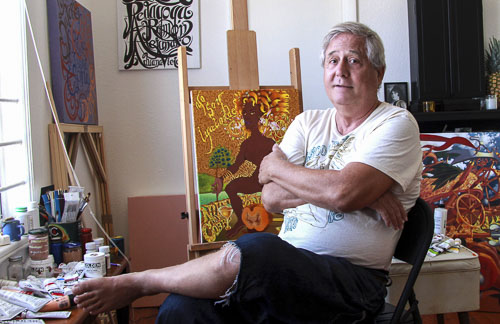
An artist of astonishing talent. His work is an inspiration to many. There are some great surrealists out there who have technical mastery. And then there are some who have conceptual genius. There are very, very few who have both. This Master possesses both in spades.